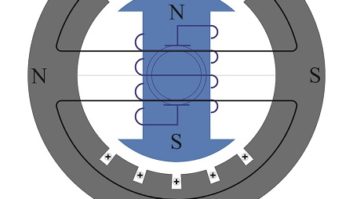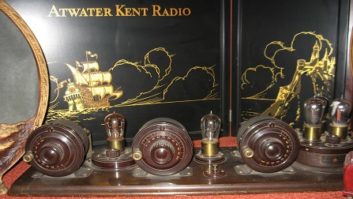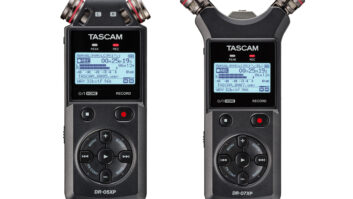Portable Perfection
Aug 1, 2004 12:00 PM, By Chriss Scherer, editor
Recording audio outside the studio presents several challenges to the radio station. The ability to make a high-quality recording is not so difficult, but finding the right device to handle the task requires attention to several factors to be sure that the correct choice is made. There is a broad range of portable choices to capture recorded sound. Whether your need is an interview recorder or a multi-track concert system, there are plenty of options to consider.

One of the first decisions to make will likely be determined by the intended use. In general, portable recorders can be grouped into two broad classes: hand-held and portable deck. Both are compact and easy to carry, and the physical size difference usually carries increased capabilities.

Removable media can be transferred to a PC for file download and editing.
The hand-held systems are ideal for one-on-one short interviews or in places where a recorder can be placed on a podium during a press conference. Their small size allows them to be placed in a pocket or travel bag quite easily. A built-in or plug-in mic makes it an all-in-one unit without the need for extra cables.
With a slight increase in size, the portable decks usually offer greater battery capacity and might provide a second media slot, which is ideal for built-in backup or long sessions. Likewise, enhanced controls and indicators and a greater number of connection possibilities may be included.
One constraint of a smaller package is the reduced area to house connectors. The XLR has proven itself as a reliable and robust audio connector. Except for pulling the audio cable out of the connection, which is possible on any audio connector, the XLR is almost indestructible. It also provides a built-in connector lock to keep it in place. Its drawback is that it is comparatively large. Smaller audio connectors, such as 3.5mm phone-style connectors, are convenient, but are prone to breaking or being pulled from their jack. Newer designs are incorporating locking mechanisms to keep them in place.
The decision between a hand-held and a deck may be determined by the available features more so than the form factor. Smaller housings may mean smaller buttons and operating indicators. When considering any recorder, look at the transport controls and how they are laid out. For some, a valuable feature is the ability to lock the controls while it is in use to prevent unintentionally stopping the recorder or changing settings.

Easy-to-access, clearly labeled transport controls ease operation.
Mixed media
One important consideration is the recording media. Mechanical media, such as cassette, DAT, Minidisc and hard drives, are all established and proven formats. More recently, solid-state media have become popular, largely because of their use in consumer electronics.
Solid-state media have no moving parts and have long life spans. Because of the consumer demand, the available storage capacity continues to rise as the price falls. Mechanical media also provide long storage capacities, but will see a finite life. Also, mechanical media tend to cost less than the equivalent capacity of solid-state media.
Media availability should also be considered. Most media is available through traditional dealers or online, but when a user is in the field, the ability to buy additional media on short notice is a consideration.

In addition to audio connections, USB, time code and other connectivity increase flexibility.
Compact Flash cards, which are the most popular solid-state media used in portable recorders, are available at almost any consumer outlet with any electronic products. The same is true of cassette and CD/DVD recordable media. PCMCIA flash media is not as common, but most devices that use this media will accept a PCMCIA adapter for Compact Flash cards. PCMCIA hard drives are available at computer and bigger electronics stores. Minidisc can be found, but not usually in any great quantity. DAT is almost impossible to find anywhere but in a music (as in musical instrument) store or boutique electronics store.
The type of media also dictates what can be done with the recording once it is completed. The solid-state media recorders typically store the audio as data files. If the recorder has a USB or other data connection, it can connect to the PC and act like an external drive. Without the data port, the media itself can be transferred to a media reader and the files can be retrieved.
Reading and transferring files takes less time than copying the audio in real-time. While DAT and Minidisc media can be transferred to other machines, retrieving the audio file requires a real-time transfer. In DAT’s infancy, there were efforts to use computer DAT drives to read the audio data, but data DATs did not see wide use, and the copying schemes were not reliable.
More in store
The basic function of a recorder is to record and playback audio. With digital recorders, the file format may be a consideration, especially if the audio will pass through additional data-reduction coding before it is put on the air. Ideally, a linear file format would be used, but at the expense of storage capacity.
A recorder’s extra features may suit a particular need. Stereo recording, additional inputs, selectable mic or line inputs or the ability to change encoding parameters are valid considerations.
On-board editing may be useful, particularly for a field reporter filing a complete story. Most on-board editing is limited to basic cut-and-paste functions, but this is effective at re-ordering elements and adding interstitial material. The on-board editing can save the user the time of transferring the audio to an audio editor to complete the element.
Some recorders provide a means to transfer audio via a telephone connection. Marantz and Nagra offer units that provide POTS connectivity. Sonifex, Orban, Nagra and Maycom have units with ISDN connectivity.
While Compact Flash and other solid-state media are becoming more popular and offering greater storage capacities, keep in mind that the recorder may not be able to recognize the extended storage, depending on how the unit accesses the storage. The latest mega-memory card may not work. The manufacturer should be able to provide information on this limitation if one exists.
Whatever features are chosen, be sure that the intended user can easily understand the controls. The perfect feature set is useless if the user can’t arm the machine and record. Also, the additional features must also be easy to use and understand.
The final consideration is the robustness of the unit itself. The recorder will be bumped and banged quite often, and probably dropped at least once.
Tech tip

When a stereo recorder is used in an interview, the mono audio is usually fed to both channels. With tape, this provides some backup in case one side of the tape is damaged. With flash media, it merely doubles the size of the recording.
If the interview will be edited in a way that the interviewer and interviewee will be separated in the final production, it may be advantageous to feed the two channels separately, with the host on one channel and the guest on the other. Some audio leakage will occur between tracks, but it will provide a cleaner sound of each voice.
If the interview will be left intact, the second audio channel can be used for a safety copy of the interview. Feed the mono audio to both tracks, but reduce the level of one input by 15dB to compensate for a loud response, laughter or other unexpected audio burst.
Recorders with separate level controls for each channel can be set to accommodate this setup. For units with fixed input balances, a Y adapter with a pad in one output can be made. The pad can be installed inside an XLR shell.
The figure above shows a 15dB pad that can be used to build the adapter. The input impedance of this pad is about 2.1kV. The output impedance is 320V. You may need to adjust these values to account for the output impedance of your mic and the input impedance of your recorder.
More information on designing and building pads can be found in the Engineer’s Notebook.
Resource Guide
A comparison of some of the available portable recorders
The Resource Guide is a partial list to help you compare various models.
View or download the Resource Guide as a PDF. click here.







